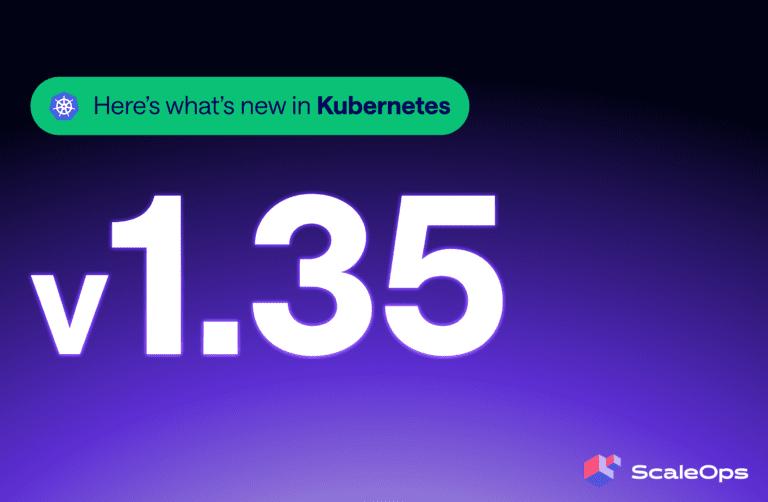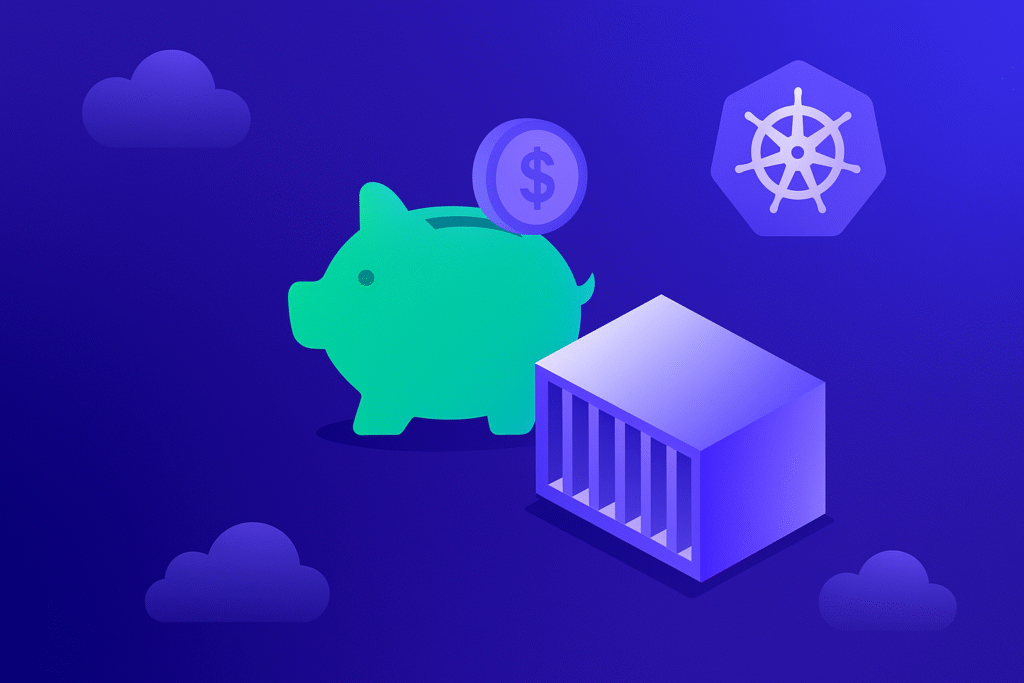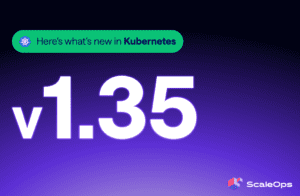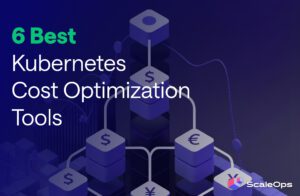Kubernetes is a powerful container orchestration platform, but understanding what it actually costs, especially across cloud providers, is rarely so simple. Kubernetes pricing can be complex, especially when choosing between different managed services or planning your infrastructure budget.
In this guide, we break down everything you need to know about Kubernetes pricing:
- Key cost drivers: Control plane vs. worker node charges, storage, networking, and autoscaling.
- Managed service comparisons: EKS, GKE, AKS, and their pricing nuances.
- Real-world budgeting tips: What teams often overlook when forecasting costs.
- Optimization strategies: How to reduce spend without sacrificing performance.
Factors that Determine the Pricing of Kubernetes
Understanding Kubernetes pricing requires examining several factors.. Most costs come from the underlying infrastructure and how you deploy Kubernetes, whether it’s through a managed services like Google’s Kubernetes Engine (GKE), AWS’ Elastic Kubernetes Service (EKS), or Microsoft’s Azure Kubernetes Service (AKS).
Let’s break them down.
Compute Resources
Compute is typically the biggest cost in a Kubernetes setup. These include:
Virtual Machines or Nodes: The underlying compute instances that form your Kubernetes cluster consume CPU, memory, and associated costs. Pricing varies based on instance types, from general-purpose to high-performance computing options.
Worker Node Costs: Each worker node in your cluster incurs charges based on the chosen instance size and specifications. Larger nodes with more CPU cores and RAM naturally cost more but may offer better resource efficiency.
Control Plane Resources: While some managed services include control plane costs, self-managed clusters require dedicated resources for the Kubernetes API server, etcd, and other control plane components.
Storage
Storage costs in Kubernetes typically covers:
Persistent Volumes: Apps that need persistent storage use block, file, or object storage. Costs vary by storage class and performance level.
Container Image Storage: Hosting images in registries adds up, especially for large or frequently updated repositories.
Backup and Snapshot: Data protection strategies including automated backups and snapshots add to your bill but are essential for production reliability.
Networking
Network charges come from several sources:
Load Balancers: External load balancers (used to expose services) often come with monthly fees plus data transfer costs.
Data Transfer: Moving data between regions, zones, or external systems can get expensive with high-traffic apps.
VPN and Private Connections: Secure connections between on-premises infrastructure and cloud-based Kubernetes clusters may require dedicated network connections with extra costs.
Licensing and Support
Extra costs may include:
Enterprise Kubernetes Distributions: Commercial Kubernetes distributions like Red Hat OpenShift, VMware Tanzu, or SUSE Rancher include licensing fees for added features and support.
Third-Party Tools: Monitoring, security, and management tools often require separate licenses or subscriptions.
Professional Services: Implementation, migration, and ongoing support can be major cost drivers, especially for complex or regulated environments.
Managed Kubernetes Pricing: EKS vs. AKS vs. GKE
Managed Kubernetes services differ in how they price control plane operations, compute, storage, and networking. Here’s how GKE, EKS, and AKS compare.
Google Kubernetes Engine (GKE) Pricing
Google Kubernetes Engine pricing includes several components. The GKE management fee covers the Kubernetes control plane, with costs varying between standard and autopilot modes. Standard GKE clusters charge for the underlying compute instances and a separate management fee, while GKE Autopilot offers a serverless experience with pricing based on actual resource consumption.
To help reduce costs, GKE supports features like preemptible instances, committed use discounts, and automatic scaling capabilities. It also integrates with Google Cloud’s billing tool, making it easier to monitor usage and optimize spend. .
Amazon EKS Pricing
Amazon Elastic Kubernetes Service charges a flat hourly rate for each EKS cluster control plane, no matter how large the cluster or how much traffic it handles.. Additional costs include EC2 instances for worker nodes, storage, and data transfer charges.
EKS supports a range of EC2 instance types, including Spot instances for reducing compute costs. It also integrates with AWS cost management tools to help track and optimize spending. The pricing model gives you predictable control plane costs and flexibility in how you configure your nodes.
Azure Kubernetes Service (AKS) Pricing
Azure Kubernetes Service doesn’t charge for the Kubernetes control plane in most regions. Organizations only pay only for the underlying virtual machines, storage, and network resources your workloads use.
AKS pricing benefits from Azure’s extensive instance family options, including Spot and Reserved instances to help manage costs . t also integrates with Azure Cost Management, which provides detailed usage tracking and optimization tools.
Managed Kubernetes Pricing Comparison
When comparing managed Kubernetes services, it’s important to look beyond control plane fees. Total cost of ownership depends on factors like regional availability, workload performance, cloud service integration, and built-in cost optimization tools.
Each provider has its advantages:
- GKE excels in Kubernetes innovation and autopilot simplicity
- EKS provides deep integration with the broader AWS ecosystem
- AKS offers competitive pricing with comprehensive Azure services integration.
Challenges of Managing Kubernetes Pricing
Organizations face several common challenges when managing Kubernetes costs effectively.
Resource Over-Provisioning
Over-provisioning represents one of the most significant challenges in Kubernetes cost management. Developers tend to allocate more CPU and memory resources than workloads need to avoid performance issues. But this safety buffer leads to significant waste, sometimes doubling or tripling infrastructure costs. This problem stems from uncertainty about actual resource requirements, fear of performance issues, and lack of visibility into real-time usage. Without proper monitoring and optimization, over-provisioned resources will consistently drain your budget.
Lack of Visibility
Traditional cloud billing isn’t built for Kubernetes. It provides limited insights into container-level costs, making it difficult to attribute expenses to specific applications, teams, or business units. Without that granularity, it’s hard to track spending, assign costs accurately, or implement effective chargeback/showback models. Organizations need specialized tools to break down Kubernetes costs in a way that aligns with organizational structure and engineering workflows
Multi-Cloud and Hybrid Deployments
Running workloads across multiple clouds or hybrid environments introduces pricing fragmentation. Each platform has its own instance types, billing models, and optimization strategies, making it hard to apply a consistent cost control approach. Tools like Cluster API or Karpenter provide abstraction and flexibility, but without per-environment tuning, they can miss optimization opportunities, trading portability for efficiency.
Manual and Siloed Optimization Efforts
Kubernetes cost tuning is often a manual, time-consuming process involving profiling workloads, tweaking configurations, and aligning across teams. It’s not always prioritized, especially when engineering focus is on feature delivery. As a result, many organizations only address cost issues reactively, once usage and the bill has already spiked.
Dynamic Scaling
Kubernetes autoscaling improves performance and reliability, but it can also drive up costs in unpredictable ways. Spikes in traffic or misconfigured scaling policies can trigger sudden increases in usage. This makes budget forecasting harder and introduces risk. To manage this, teams must fine-tune autoscaling settings to strike a balance between responsiveness and cost control.
Best Practices to Optimize Kubernetes Pricing
Reducing Kubernetes costs while maintaining performance requires strategic optimization across multiple areas. Here are the most effective approaches:
Automate real-time rightsizing
Most organizations waste 30-50% of their Kubernetes spend on over-provisioned resources. But it is possible to eliminate this waste. Instead of relying on static thresholds or periodic audits, use real-time automation platforms like ScaleOps, which automatically manage requests and limits at the pod level based on application and workload context and usage. This ensures every workload runs with exactly the resources it needs. No more, no less.
Smarter Autoscaling
Built-in Kubernetes autoscalers like HPA and VPA are reactive by design. They respond to past metrics like CPU or memory usage, often with delays that don’t align with real-time demand. They also operate in isolation, without awareness of your application’s startup behavior, traffic patterns, or performance requirements.
ScaleOps, in contrast, is application context-aware. It understands the nature of each workload and continuously manages resources in real time, not just based on usage, but on what the workload actually needs to run efficiently. This drives maximum cost savings across your cluster, while also maximizing performance.
Cost-Effective Instances
Mix instance types strategically within your cluster. Use spot instances for fault-tolerant workloads and reserved instances for predictable applications. This approach can reduce compute costs by 60-80% for suitable workloads.
Cost Visibility
Understanding Kubernetes costs takes more than just high-level metrics. ScaleOps gives you real-time visibility into your spend, with cost breakdowns by cluster, namespace, team, app, annotations, and labels. This granularity makes it easy to attribute costs accurately across teams and stakeholders.
ScaleOps integrates directly with AWS Cost and Usage Reports (CUR), GCP Billing Export, and Azure Cost Management. That means you get deep, cross-cloud visibility, down to the most granular level.
Adopt FinOps Culture
Cost optimization works best when everyone, from DevOps to Finance, has access to the same, actionable data. ScaleOps supports a strong FinOps culture by giving all teams real-time visibility into Kubernetes costs, broken down by team, app, and environment. This shared view helps engineers make better resource decisions, gives finance the data to forecast accurately, and lets leadership align cost efficiency with business goals.
Kubernetes pricing is complex. But it doesn’t have to be confusing.
Kubernetes pricing is complex by design, spanning compute, storage, networking, and provider-specific billing models. But complexity doesn’t have to mean confusion. With the right strategies and tools, teams can shift from reactive cost control to proactive, intelligent application context-aware optimization.
This guide covered the key drivers of Kubernetes spend and laid out practical tactics, like workload rightsizing, smarter autoscaling, and granular multi-cloud cost visibility. These approaches can deliver significant savings. In fact, ScaleOps saves our customers up to 80% on their cloud resource costs.
The most effective teams don’t rely on one-off audits or guesswork. They use automation platforms like ScaleOps to continuously analyze usage patterns, interpret application context, and make real-time pod-level decisions. This turns cost optimization from a manual chore into an always-on capability.
With the right approach that combines strategic planning, automated optimization, and a culture of cost awareness, engineering teams can unlock Kubernetes’ full potential while maintaining predictable, efficient spending.























